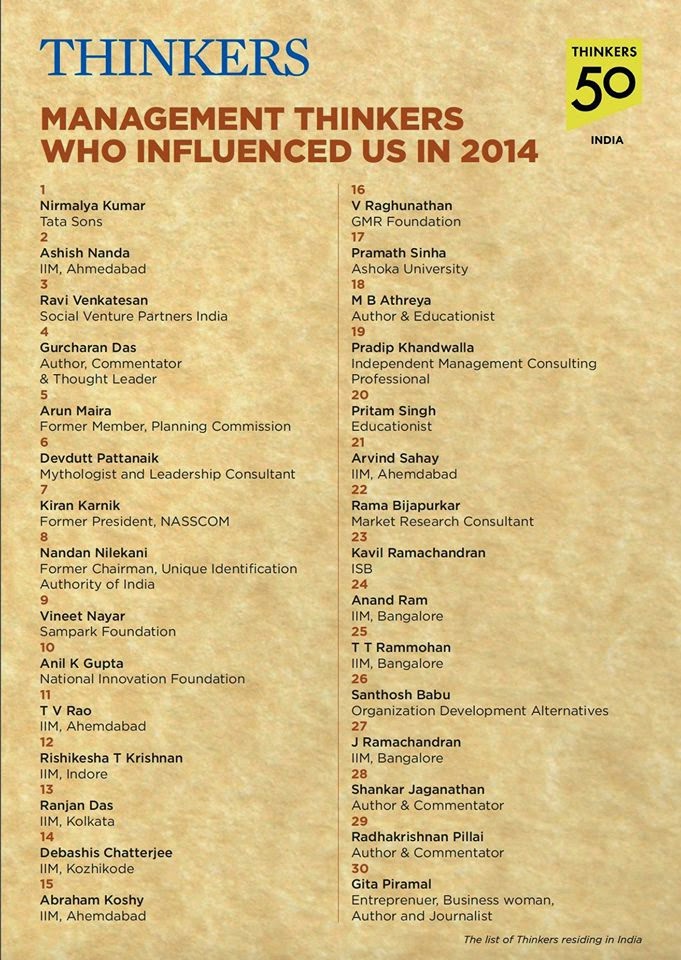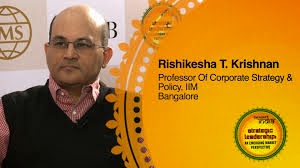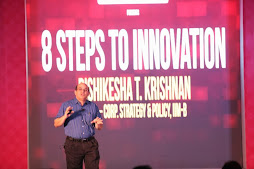Education and health are usually identified as the top priority sectors for innovation in India. I recently had the privilege of visiting India’s foremost example of healthcare innovation, the Aravind Eye Care System (AECS) and interacting with some of the leaders of low-cost ophthalmic care in India. The occasion was Vision 2020: The Right to Sight, the 8th in a series of annual conferences organised by AECS to bring together the leading practitioners in this space and share best practices.
The Aravind Model: Scaled-up, & Now going beyond Cataract Surgery
While the original Aravind model – eliminate avoidable blindness by performing cataract surgeries; use scale and innovation to bring down cost; focus the surgeon’s time on the phase of the surgery needing the greatest skill inputs; use trained para-medics to do all other operations; outreach to bring in patients from a larger catchment area; cover the costs of free and subsidized surgeries through the efficiency with which surgeries are done for paying patients – is now legendary, what is really gratifying is how the Aravind model has been adopted and adapted by eyecare groups across the country. Much credit for this must go to the team at AECS itself that has taken the initiative to share its learning with others and organize forums such as the Vision 2020 conference to which other organizations are invited as equal partners.
Today, the Aravind model that was originally developed for cataract surgery has been the inspiration for hospitals taking on more challenging tasks such as retinopathy, and even farther afield to other domains such as maternity care (e.g. Lifespring Hospitals, Hyderabad). In the process, the principles of low-cost health care have got well defined, making them applicable to more domains in the field. Three core principles are massive scale, focus on paraskilling, and a relentless focus on optimizing scarce resources (Kennedy and Novogratz in London & Hart, 2011).
The Vision 2020 conference
While earlier conferences focused on technical issues, for the first time the 2012 conference introduced a track on “Leadership.” Other tracks were on Operation Theatre Management and Sterilization, Outreach Management, Optometry and Optical Dispensing, and Achieving Excellence in Operations Management.
The Leadership track brought together institutional leaders and funding organizations. One interesting insight that emerged from the discussion in one of the panels was that many organizations are struggling to identify the right governance mechanisms for their future growth and sustainability. In older organizations, the original trustees have either not created a strong second line, or are unwilling to “let go.” In many cases, trust memoranda give predominance to “lifetime trustees” and rigidities in these documents prevent smooth transitions from taking place. Fortunately, the AECS team plans to devote some attention to the creation of model trust structures and constitutions that should help organizations in the future.
As a part of the track design, the organizers invited leaders from other sectors. Prominent among these were Mr. Bangera, an alumnus of IIM Ahmedabad who turned around a small automobile component company and transformed it into Hi Tech Arai, the leading engineering company in Madurai. Mr. Bangera gave a fascinating talk about how his company is moving towards self-governance – parts of his factory are now run by workers without the involvement of supervisory staff.
Another fascinating talk was by Dr. Rajasabapathy of Ganga Hospital, Coimbatore which is specialized on accident surgery, trauma and spinal surgery. Today, Ganga Hospital has emerged as one of the leading speciality centres for micro- and reconstructive surgery in India.
My presentation was on “Leadership for High Impact Innovation.” In my talk, I stressed the importance of building an idea pipeline, focusing on small ideas to start with, building a culture where there is openness to new ideas, tolerating honest failure, and using innovation as a basis of striving for excellence.
The Aravind Model: Scaled-up, & Now going beyond Cataract Surgery
While the original Aravind model – eliminate avoidable blindness by performing cataract surgeries; use scale and innovation to bring down cost; focus the surgeon’s time on the phase of the surgery needing the greatest skill inputs; use trained para-medics to do all other operations; outreach to bring in patients from a larger catchment area; cover the costs of free and subsidized surgeries through the efficiency with which surgeries are done for paying patients – is now legendary, what is really gratifying is how the Aravind model has been adopted and adapted by eyecare groups across the country. Much credit for this must go to the team at AECS itself that has taken the initiative to share its learning with others and organize forums such as the Vision 2020 conference to which other organizations are invited as equal partners.
Today, the Aravind model that was originally developed for cataract surgery has been the inspiration for hospitals taking on more challenging tasks such as retinopathy, and even farther afield to other domains such as maternity care (e.g. Lifespring Hospitals, Hyderabad). In the process, the principles of low-cost health care have got well defined, making them applicable to more domains in the field. Three core principles are massive scale, focus on paraskilling, and a relentless focus on optimizing scarce resources (Kennedy and Novogratz in London & Hart, 2011).
The Vision 2020 conference
While earlier conferences focused on technical issues, for the first time the 2012 conference introduced a track on “Leadership.” Other tracks were on Operation Theatre Management and Sterilization, Outreach Management, Optometry and Optical Dispensing, and Achieving Excellence in Operations Management.
The Leadership track brought together institutional leaders and funding organizations. One interesting insight that emerged from the discussion in one of the panels was that many organizations are struggling to identify the right governance mechanisms for their future growth and sustainability. In older organizations, the original trustees have either not created a strong second line, or are unwilling to “let go.” In many cases, trust memoranda give predominance to “lifetime trustees” and rigidities in these documents prevent smooth transitions from taking place. Fortunately, the AECS team plans to devote some attention to the creation of model trust structures and constitutions that should help organizations in the future.
As a part of the track design, the organizers invited leaders from other sectors. Prominent among these were Mr. Bangera, an alumnus of IIM Ahmedabad who turned around a small automobile component company and transformed it into Hi Tech Arai, the leading engineering company in Madurai. Mr. Bangera gave a fascinating talk about how his company is moving towards self-governance – parts of his factory are now run by workers without the involvement of supervisory staff.
Another fascinating talk was by Dr. Rajasabapathy of Ganga Hospital, Coimbatore which is specialized on accident surgery, trauma and spinal surgery. Today, Ganga Hospital has emerged as one of the leading speciality centres for micro- and reconstructive surgery in India.
My presentation was on “Leadership for High Impact Innovation.” In my talk, I stressed the importance of building an idea pipeline, focusing on small ideas to start with, building a culture where there is openness to new ideas, tolerating honest failure, and using innovation as a basis of striving for excellence.




.JPG)















Hello,
ReplyDeleteWhat your comment on" Jugaad is not innovation: PC"
http://www.indianexpress.com/news/jugaad-is-not-innovation-pc/985172/
regards,
Mahesh
Great post, informative and inspiring! Hope to hear more about Mr. Bangera and Mr. Rajasabapathy in future. Thanks.
ReplyDelete